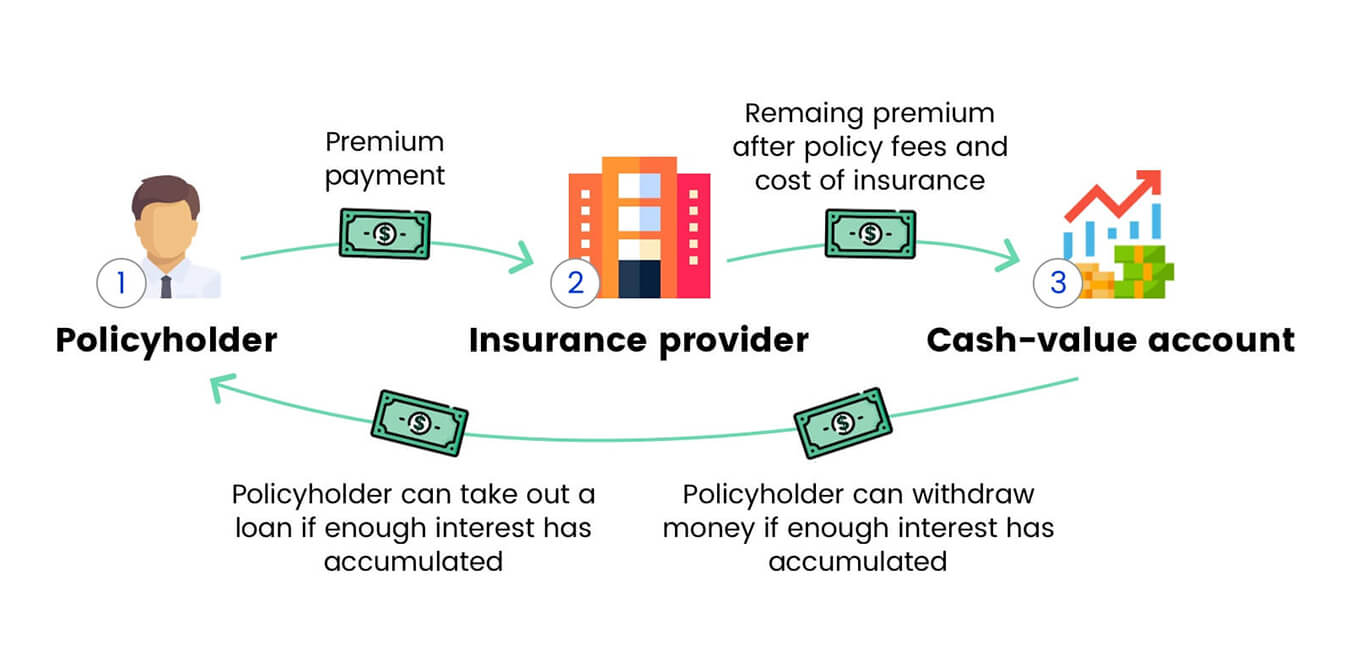Home>Finance>Why All The Mergers And Acquisitions In Healthcare?


Finance
Why All The Mergers And Acquisitions In Healthcare?
Published: February 24, 2024
Discover the impact of finance on the surge of mergers and acquisitions in the healthcare industry. Explore the reasons behind this trend and its implications.
(Many of the links in this article redirect to a specific reviewed product. Your purchase of these products through affiliate links helps to generate commission for LiveWell, at no extra cost. Learn more)
Table of Contents
**
The Current Landscape of Healthcare Mergers and Acquisitions
**
The healthcare industry is witnessing a significant surge in mergers and acquisitions (M&A), reshaping the landscape of care delivery and organizational structures. These strategic moves are redefining the relationships between healthcare providers, payers, and technology companies, leading to the emergence of integrated healthcare ecosystems. The motivations behind these M&A activities are multifaceted, ranging from achieving economies of scale to enhancing care coordination and leveraging advanced technologies. As the industry continues to evolve, it is crucial to understand the driving forces behind these transactions and their implications for various stakeholders, including patients, providers, and regulatory bodies.
The ongoing wave of healthcare M&A is driven by a combination of factors, including the pursuit of operational efficiencies, access to new markets, and the need to adapt to value-based care models. Furthermore, the integration of digital health solutions and data analytics is prompting organizations to seek partnerships that enable them to harness the power of technology in improving patient outcomes and streamlining administrative processes. These developments are reshaping the competitive dynamics within the industry, as traditional healthcare entities are facing increasing pressure to innovate and collaborate with non-traditional players such as technology firms and retail giants.
Amidst these transformations, it is essential to examine the impact of M&A activities on patients and providers. Patients are likely to experience changes in care delivery, access to services, and overall care experiences as healthcare organizations consolidate and expand their service offerings. Likewise, healthcare providers are facing shifts in care delivery models, reimbursement structures, and professional dynamics as they navigate the complexities of integrated healthcare systems. Moreover, regulatory and legal considerations play a pivotal role in shaping the M&A landscape, influencing the strategies and outcomes of these transactions.
In this article, we will delve into the intricacies of healthcare M&A, exploring the drivers behind these strategic moves, the implications for patients and providers, as well as the regulatory and legal considerations that underpin these transactions. By gaining insights into these aspects, stakeholders can navigate the evolving healthcare landscape with a deeper understanding of the forces driving change and the challenges and opportunities that lie ahead.
**
The Current Landscape of Healthcare Mergers and Acquisitions
**
The healthcare industry is experiencing a profound transformation characterized by a surge in mergers and acquisitions (M&A) activities. These strategic initiatives are reshaping the traditional paradigms of care delivery and organizational structures, giving rise to integrated healthcare ecosystems. The motivations driving these M&A endeavors are diverse, encompassing objectives such as achieving economies of scale, enhancing care coordination, and capitalizing on advanced technologies. As the industry continues to evolve, it is crucial to comprehend the driving forces behind these transactions and their implications for various stakeholders, including patients, providers, and regulatory bodies.
The ongoing wave of healthcare M&A is propelled by a convergence of factors, including the pursuit of operational efficiencies, access to new markets, and the imperative to adapt to value-based care models. Moreover, the integration of digital health solutions and data analytics is compelling organizations to seek partnerships that enable them to harness the power of technology in improving patient outcomes and streamlining administrative processes. These developments are reshaping the competitive dynamics within the industry, as traditional healthcare entities face mounting pressure to innovate and collaborate with non-traditional players, such as technology firms and retail giants.
Amidst these transformations, it is essential to examine the impact of M&A activities on patients and providers. Patients are likely to experience changes in care delivery, access to services, and overall care experiences as healthcare organizations consolidate and expand their service offerings. Similarly, healthcare providers are confronting shifts in care delivery models, reimbursement structures, and professional dynamics as they navigate the complexities of integrated healthcare systems. Furthermore, regulatory and legal considerations play a pivotal role in shaping the M&A landscape, influencing the strategies and outcomes of these transactions.
In this article, we will delve into the intricacies of healthcare M&A, exploring the drivers behind these strategic moves, the implications for patients and providers, as well as the regulatory and legal considerations that underpin these transactions. By gaining insights into these aspects, stakeholders can navigate the evolving healthcare landscape with a deeper understanding of the forces driving change and the challenges and opportunities that lie ahead.
Drivers of Mergers and Acquisitions in Healthcare
The increasing trend of mergers and acquisitions (M&A) in the healthcare sector is propelled by a myriad of drivers that reflect the evolving dynamics of the industry. One of the primary drivers is the pursuit of operational efficiencies and economies of scale. Healthcare organizations seek to optimize their resources, reduce redundant costs, and enhance their overall financial performance through consolidation and integration. By combining their operations, these entities can streamline administrative functions, standardize processes, and negotiate better terms with suppliers, ultimately improving their bottom line.
Access to new markets and patient populations is another compelling driver behind healthcare M&A activities. In an era where market share and geographic reach hold significant strategic value, organizations are keen on expanding their footprint to serve a broader patient base. Mergers and acquisitions enable healthcare providers to penetrate new territories, establish regional dominance, and cultivate a more extensive network of care delivery, thereby strengthening their competitive position and market presence.
Furthermore, the shift towards value-based care models and the emphasis on care coordination have catalyzed M&A endeavors within the healthcare landscape. Integrated care delivery models, which prioritize holistic and coordinated approaches to patient care, necessitate seamless collaboration among various healthcare entities. Mergers and acquisitions facilitate the creation of integrated healthcare systems, where providers, payers, and other stakeholders can align their efforts to deliver more efficient, cost-effective, and patient-centric care.
The integration of digital health solutions, such as telemedicine, remote monitoring, and health information systems, has emerged as a pivotal driver of M&A activities. Healthcare organizations are increasingly recognizing the transformative potential of technology in improving care delivery, enhancing patient engagement, and optimizing clinical workflows. Collaborative ventures through M&A enable these entities to harness the power of digital health solutions, leverage data analytics, and capitalize on innovation to drive better health outcomes and operational effectiveness.
Moreover, the evolving regulatory landscape and the associated compliance requirements contribute to the rationale behind healthcare M&A. By consolidating resources and expertise, organizations can navigate the complexities of regulatory frameworks more effectively, ensuring adherence to standards and mitigating compliance risks. Additionally, M&A activities enable healthcare entities to pool their intellectual capital, research capabilities, and clinical expertise, fostering innovation and advancing medical science to address unmet healthcare needs.
Overall, the drivers of mergers and acquisitions in healthcare reflect the industry’s pursuit of efficiency, innovation, market expansion, and regulatory compliance. These strategic imperatives are reshaping the healthcare ecosystem, influencing the ways in which care is delivered, managed, and experienced by patients and providers.
Impact on Patients and Providers
The surge in mergers and acquisitions (M&A) within the healthcare sector has far-reaching implications for both patients and providers, reshaping the dynamics of care delivery, access to services, and the overall healthcare experience. As healthcare organizations consolidate and integrate their operations, patients are likely to encounter notable changes in the way care is delivered and accessed. The expansion of service offerings, coupled with the establishment of integrated healthcare systems, can potentially enhance care coordination and provide patients with a more comprehensive continuum of care. Moreover, the geographic reach and network expansion resulting from M&A activities can improve patient access to specialized services and advanced treatment options, particularly in underserved regions.
Conversely, the impact of healthcare M&A on providers is multifaceted, encompassing shifts in care delivery models, professional dynamics, and organizational structures. Healthcare professionals may experience changes in their practice environments, as integrated healthcare systems redefine the workflows, protocols, and collaborative practices within clinical settings. Additionally, the alignment of providers under consolidated entities may lead to standardized care processes, shared best practices, and enhanced peer collaboration, ultimately fostering a culture of continuous improvement and knowledge exchange.
Furthermore, the financial implications of healthcare M&A can influence the reimbursement structures for providers, as integrated entities negotiate contracts with payers and implement value-based care initiatives. While this may present opportunities for providers to participate in innovative payment models and population health management programs, it also introduces complexities associated with adapting to new reimbursement methodologies and performance metrics. Additionally, the consolidation of healthcare entities may lead to workforce realignments, redefined roles, and changes in leadership structures, necessitating adaptation and resilience from the provider community.
From a patient care perspective, the impact of M&A activities extends beyond clinical services to encompass the overall care experience, patient engagement, and health outcomes. Integrated healthcare systems resulting from M&A endeavors can leverage data-driven insights, care coordination platforms, and digital health solutions to personalize care pathways, proactively manage chronic conditions, and improve preventive care interventions. Patients may benefit from streamlined care transitions, enhanced access to their health information, and a more cohesive healthcare journey facilitated by integrated care teams.
However, it is essential to consider potential challenges that may arise from healthcare M&A, particularly in terms of care continuity, patient-provider relationships, and the preservation of personalized care experiences. As organizations undergo structural changes and operational integrations, maintaining a patient-centric focus and preserving the provider-patient bond becomes a critical consideration to ensure that the human touch in healthcare remains integral amidst industry transformations.
Ultimately, the impact of healthcare M&A on patients and providers underscores the need for thoughtful navigation of these transitions, with a focus on preserving care quality, fostering innovation, and advancing the principles of patient-centered care within an evolving healthcare landscape.
Regulatory and Legal Considerations
Amidst the surge of mergers and acquisitions (M&A) in the healthcare sector, regulatory and legal considerations play a pivotal role in shaping the landscape of these strategic transactions. The complex regulatory framework governing healthcare M&A encompasses antitrust regulations, licensure requirements, data privacy laws, and compliance standards, presenting significant challenges and opportunities for organizations navigating these endeavors.
Antitrust regulations are a critical aspect of healthcare M&A, as they aim to prevent monopolistic practices, promote market competition, and safeguard consumer interests. Healthcare entities pursuing M&A activities must undergo rigorous antitrust scrutiny to assess the potential impact on market concentration, pricing dynamics, and consumer access to care. Compliance with antitrust regulations requires thorough assessments of market shares, competitive landscapes, and the potential implications of consolidation on patient choices and healthcare affordability.
Licensure requirements and accreditation standards also come into focus during healthcare M&A, as organizations seek to align their operational structures and care delivery models. Ensuring compliance with state-specific licensure regulations, professional practice standards, and accreditation criteria is essential to maintaining the quality and integrity of care services within integrated healthcare systems. Moreover, the harmonization of clinical protocols, quality assurance measures, and patient safety standards becomes a focal point in the post-merger integration phase, necessitating meticulous attention to regulatory alignment and best practice adoption.
Data privacy laws and information security regulations present additional complexities in the context of healthcare M&A, particularly with the integration of electronic health records, interoperable health information systems, and data sharing platforms. Organizations engaging in M&A activities must navigate the intricacies of data governance, patient consent frameworks, and cybersecurity protocols to ensure the confidentiality, integrity, and availability of sensitive health information. Compliance with regulations such as the Health Insurance Portability and Accountability Act (HIPAA) and the General Data Protection Regulation (GDPR) is paramount to safeguarding patient privacy and maintaining regulatory adherence throughout the M&A process.
Moreover, the legal considerations surrounding contractual agreements, intellectual property rights, and liability frameworks demand comprehensive due diligence and strategic legal counsel during healthcare M&A. Negotiating and structuring agreements that encompass financial arrangements, service contracts, intellectual property transfers, and risk mitigation strategies requires a nuanced understanding of healthcare law, corporate governance, and contractual obligations.
Overall, regulatory and legal considerations exert a substantial influence on the strategic decisions, operational integrations, and compliance frameworks associated with healthcare M&A. Navigating these complexities demands a collaborative approach involving legal experts, regulatory advisors, and industry stakeholders to ensure that M&A activities align with regulatory mandates, legal standards, and ethical principles, ultimately fostering a healthcare ecosystem that prioritizes patient welfare, market competition, and regulatory compliance.
The Future of Healthcare Mergers and Acquisitions
The landscape of healthcare mergers and acquisitions (M&A) is poised for continued evolution, driven by a confluence of factors that are reshaping the industry’s strategic imperatives and competitive dynamics. As healthcare organizations navigate the complexities of care delivery, technological innovation, and regulatory compliance, the future of M&A in healthcare holds profound implications for stakeholders across the healthcare continuum.
One of the defining trends shaping the future of healthcare M&A is the convergence of healthcare with technology and digital health solutions. The integration of telemedicine platforms, health information systems, and data analytics capabilities is likely to drive collaborative ventures and partnerships between healthcare entities and technology firms. This convergence not only facilitates the delivery of virtual care and remote monitoring but also enables organizations to harness the power of data-driven insights in optimizing care pathways, population health management, and personalized medicine.
Furthermore, the pursuit of value-based care and the emphasis on holistic, patient-centric care models are expected to drive M&A activities aimed at creating integrated healthcare ecosystems. These ecosystems encompass the seamless coordination of care across various settings, the alignment of incentives among providers and payers, and the integration of social determinants of health into care delivery. As healthcare organizations strive to enhance care quality, improve health outcomes, and contain costs, M&A will serve as a strategic enabler for fostering collaborative care networks and innovative care delivery models.
Moreover, the imperative to address healthcare disparities, improve access to care, and enhance population health outcomes is likely to influence the future landscape of healthcare M&A. Organizations may seek partnerships and alliances aimed at addressing healthcare inequities, expanding care access in underserved communities, and leveraging community-based resources to support preventive care and wellness initiatives. These initiatives align with the industry’s broader commitment to advancing health equity, addressing social determinants of health, and promoting inclusive, patient-centered care delivery.
From a regulatory standpoint, the future of healthcare M&A will be shaped by evolving policy frameworks, compliance requirements, and the imperative to balance market competition with consumer interests. Antitrust regulations, data privacy laws, and licensure standards will continue to influence the strategic considerations and operational integrations associated with M&A activities, necessitating proactive engagement with regulatory authorities and stakeholders to ensure alignment with regulatory mandates.
Overall, the future of healthcare M&A is characterized by a convergence of healthcare with technology, a focus on value-based, patient-centric care, and a commitment to addressing healthcare disparities. These trends underscore the industry’s trajectory towards fostering innovation, collaboration, and equitable access to high-quality care, positioning healthcare M&A as a catalyst for transformative change within the healthcare ecosystem.














